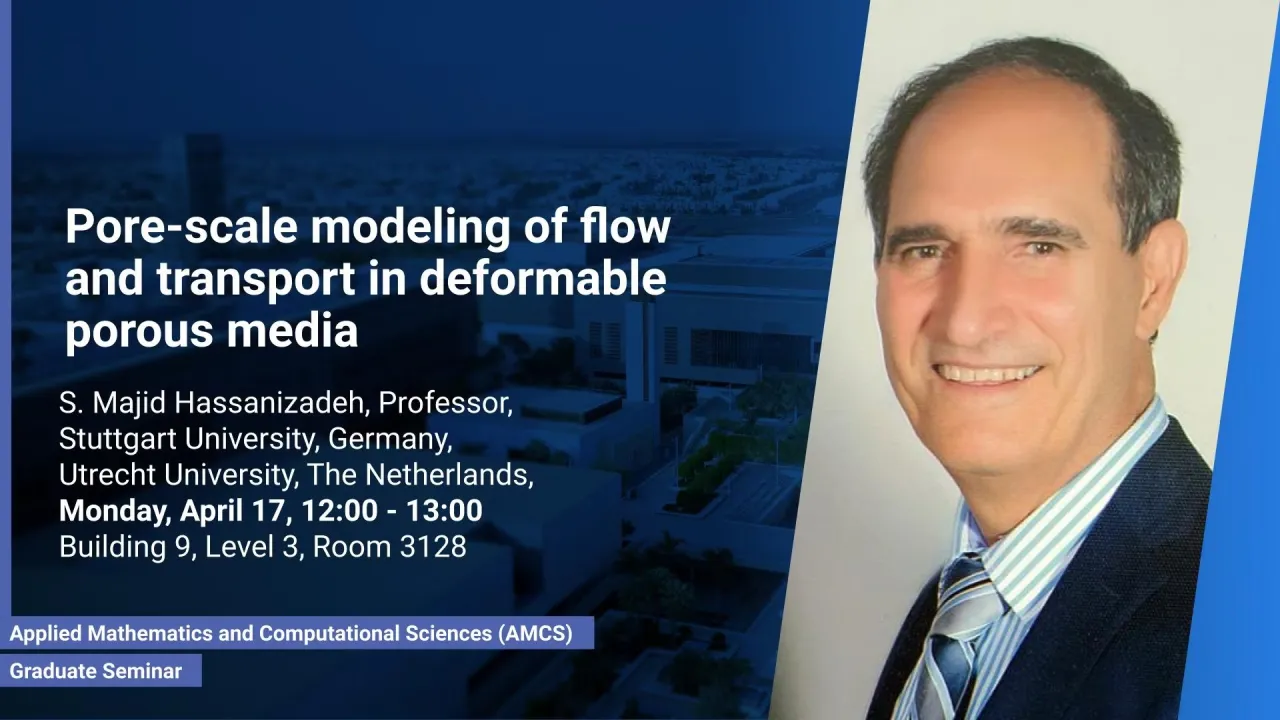
Pore-scale modeling of flow and transport in deformable porous media
Pore-scale models are valuable tools for the investigation of various flow and transport processes in porous media, and upscaling from pore to core scales. Popular approaches include pore-network models (PNM), Lattice-Boltzman models (LBM), Smooth Particle Hydrodynamics (SPH), volume-of-fluid method (VOF), and grain-scale models (GSM).
Overview
Abstract
Pore-scale models are valuable tools for the investigation of various flow and transport processes in porous media, and upscaling from pore to core scales. Popular approaches include pore-network models (PNM), Lattice-Boltzman models (LBM), Smooth Particle Hydrodynamics (SPH), volume-of-fluid method (VOF), and grain-scale models (GSM).
In this lecture, we only discuss PNM (pore-network models) and GSM (grain-scale models). We present basics of PNM and GSM. PNM approach is illustrated by showing its application single-phase and two-phase flow in porous media.
The grain-scale model (GSM) is particularly suitable for modelling flow in partially-saturated deformable porous materials. It is based on combining Discrete Element Method (DEM) with Pore Unit Assembly Approach. Basics are presented and its application to a bed of swelling grains (used in diapers) is illustrated.
Brief Biography
Emeritus Professor of Hydrogeology at the Faculty of Geosciences of Utrecht University and Senior Professor at Stuttgart Center for Simulation Science (SIMTECH), Integrated Research Training Group SFB 1313, Stuttgart University, Germany.